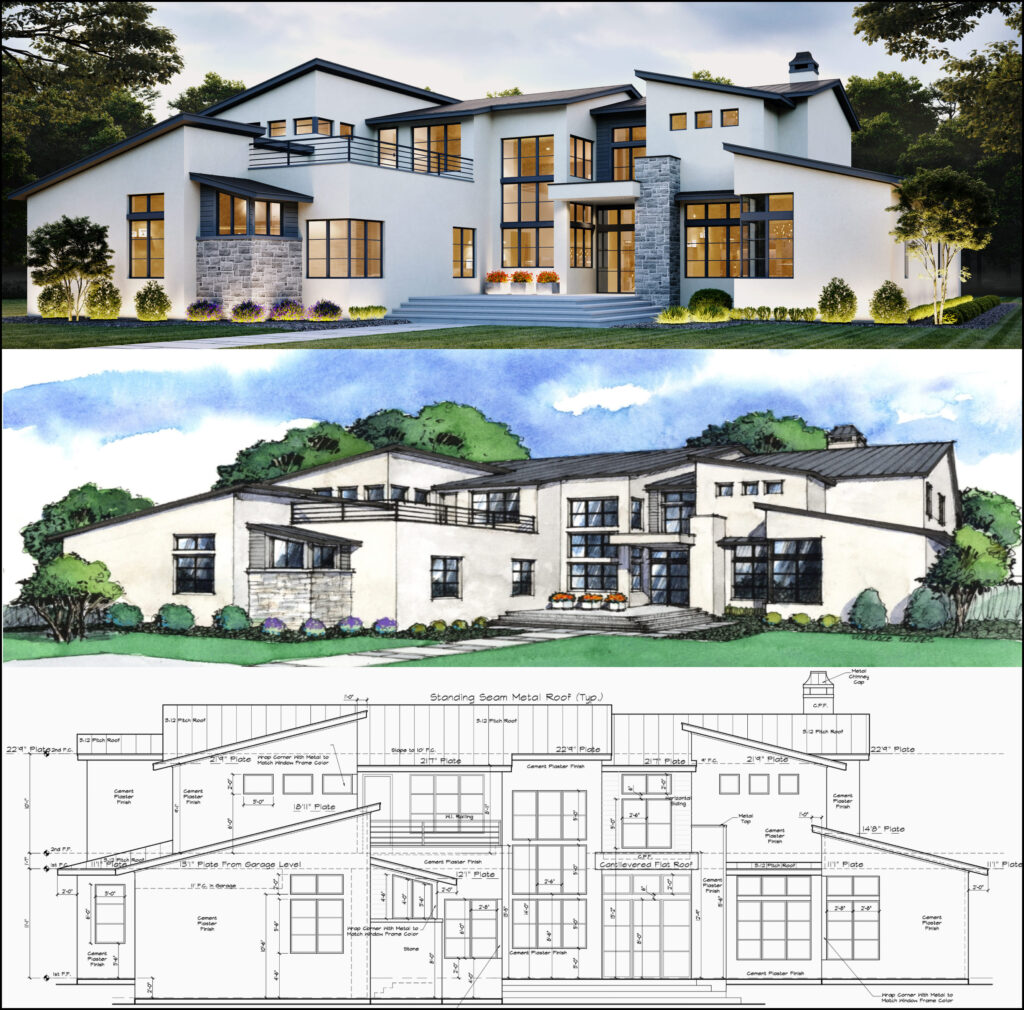A Thorough Summary of Building Designs and Their Influence on Modern City Planning and Growth
Building styles have long offered as a mirror to the societal worths and technological innovations of their time, playing a vital role in shaping modern city preparation and growth. From the magnificence of Neoclassicism to the practical technique of Brutalism, each style has introduced special principles that influence metropolitan looks and performance.
Historical Review of Building Styles

As societies transitioned through the Center Ages, Gothic style emerged, characterized by its verticality and elaborate describing, matching the spiritual aspirations of the period. The Renaissance noted a revival of timeless ideals, merging art and style in cutting-edge manner ins which affected succeeding styles throughout Europe.

Today, building designs continue to advance, driven by globalization and sustainability concerns, reflecting a vibrant interaction between heritage and development. This historical introduction highlights the value of design as a mirror of social development and as a stimulant for metropolitan development.
Key Architectural Styles Explained
The variety of architectural designs reflects the myriad impacts that shape our constructed setting, each embodying distinct qualities and cultural values. Secret building styles consist of Classic, Gothic, Baroque, Innovation, and Postmodernism, each standing for one-of-a-kind historic contexts and aesthetic approaches.
Classic design, rooted in old Greece and Rome, emphasizes proportion, percentage, and the use of columns (cda architects). In contrast, Gothic architecture, growing in the Middle Ages, is defined by sharp arches, ribbed vaults, and flying buttresses, developing a heavenly high quality in basilicas. Baroque style, emerging in the 17th century, is noted by majesty, elaborate ornamentation, and a dynamic interaction of light and darkness
Modernism, which got momentum in the early 20th century, focuses on feature over type, using new materials like steel and glass to create minimal structures. Postmodernism, reacting versus the austerity of Innovation, embraces eclecticism and historical reference, often incorporating spirited elements and paradox.

Influence On Urban Preparation
Fit the advancement of cities, building styles substantially affect urban preparation choices. The choice of building style usually dictates the looks, capability, and general character of metropolitan atmospheres. For instance, innovation, with web its emphasis on minimalism and performance, encourages open rooms and the integration of technology, shaping city designs that prioritize effectiveness and accessibility. On the other hand, traditional styles may stress historic preservation, causing city designs that maintain social heritage and promote pedestrian-friendly settings.
Moreover, building styles can affect zoning policies and land use plans. Urban planners need to think about the prevailing building trends when creating districts, making certain that new advancements integrate with existing frameworks. This factor to consider promotes natural city landscapes and improves area identification.
The execution of details architectural designs can also influence socioeconomic aspects within a city. High-end contemporary styles may bring in wealthy locals and services, leading to gentrification, while a lot more cost effective housing options might focus on practical and lasting styles to fit diverse populations. cda architects. Eventually, the interaction between building styles and city planning produces vibrant cities that mirror both historical context and contemporary needs, forming the lived experiences of their inhabitants
Sustainability and Modern Style
Architectural styles play a pivotal duty in addressing contemporary challenges, especially in the world of sustainability. As metropolitan locations expand and environmental problems escalate, modern-day design progressively accepts lasting design concepts that focus on energy efficiency, source conservation, and very little environmental impact.
Contemporary building activities, such as biophilic design and green style, advocate for frameworks that balance with their surroundings, making use of natural materials and advertising biodiversity. These designs typically incorporate renewable resource resources, such as photovoltaic panels and wind generators, to reduce dependence on nonrenewable fuel sources and lower carbon footprints.
Furthermore, the integration of innovative technologies, such as clever structure systems, improves power administration, maximizing source usage while ensuring resident convenience. Innovative water monitoring methods, including rainwater harvesting and greywater recycling, more add to sustainable metropolitan settings.
Significantly, sustainability expands beyond ecological problems; it incorporates social and financial measurements too. By promoting area health and advertising inclusivity, contemporary architectural styles straighten over at this website with lasting growth objectives. The evolution of building methods continues to form resistant cities that not only satisfy the requirements of the existing yet likewise safeguard the future for generations to come.
Community Engagement in Layout
Community interaction in style offers as a vital bridge between engineers and the populations they serve, ensuring that the built setting reflects the needs and ambitions of its customers. This joint procedure welcomes area participants to add their understandings and preferences, fostering a sense of ownership and responsibility toward the areas they live in.
Effective neighborhood engagement uses numerous methods, such as workshops, studies, and public discussion forums, to gather varied perspectives. These strategies help with a two-way discussion, enabling designers to comprehend this website neighborhood contexts while equipping homeowners to articulate their worries and desires. This inclusivity not only enhances the design quality yet likewise advertises social equity by attending to the unique obstacles faced by marginalized groups.
In addition, neighborhood involvement can bring about ingenious services that may not arise in a typical style process. By incorporating neighborhood understanding and cultural values, engineers can create areas that resonate more deeply with customers, enhancing usability and sustainability. Inevitably, prioritizing neighborhood engagement in layout processes leads to atmospheres that support social interactions, support wellness, and strengthen neighborhood ties, therefore playing a pivotal function fit contemporary metropolitan landscapes.
Final Thought
Architectural designs have actually greatly influenced modern city planning and growth, mirroring progressing social and technical contexts. As cities continue to expand and adjust, the recurring discussion in between architectural heritage and contemporary layout concepts will certainly continue to be crucial in producing comprehensive, vibrant spaces that improve top quality of life and promote social equity.